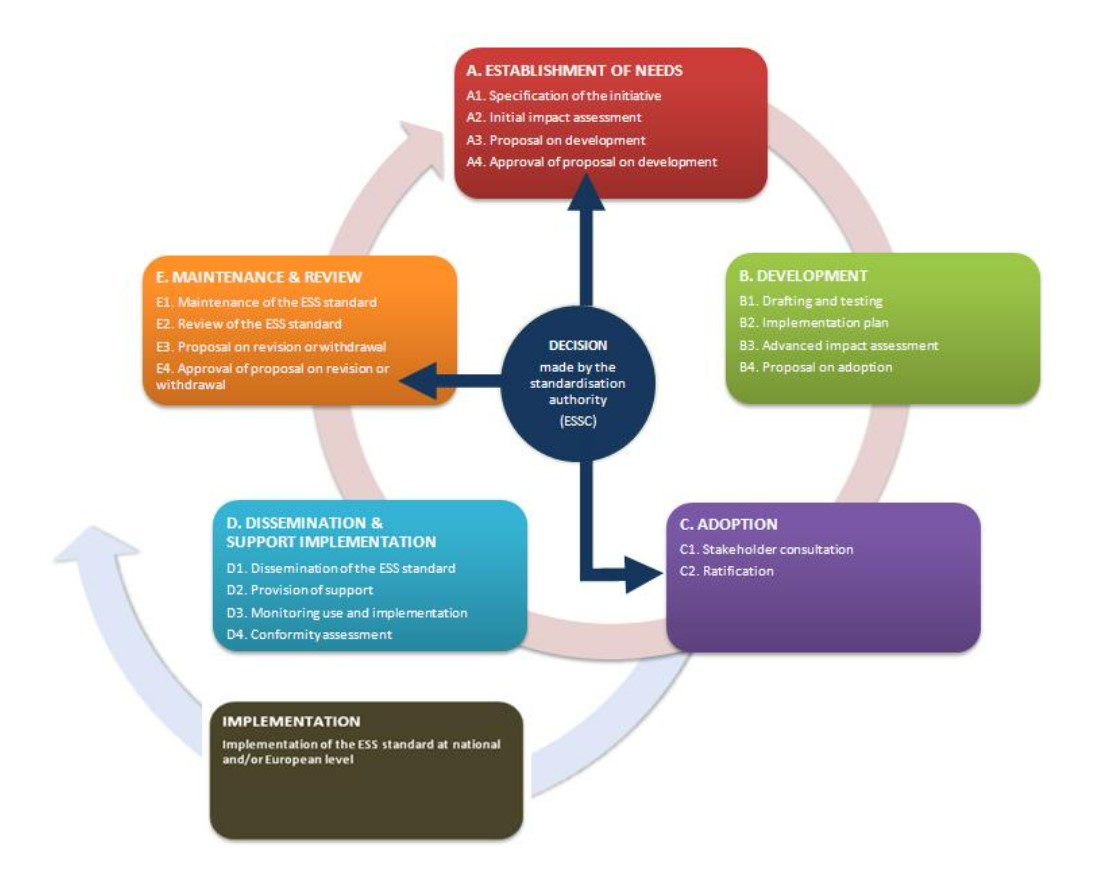
The standardisation process at ESS level aims at providing a framework for setting standards for the ESS in order to further enhance collaboration. The standardisation process in which the ESS standards is established and maintained is built around five principles of standardisation:
- Consensus
Acceptance by consensus ensures that all voices are heard, and the resulting standard is generally agreed to. Consensus is characterised by the absence of sustained opposition to substantial issues by any important part of the concerned interests. A consensual standardisation process thus seeks to take into account the views of all parties concerned and to reconcile any conflicting arguments. Consensus does not imply unanimity. - Transparency and openness
Involvement of all stakeholders ensures transparency of the process. Thus, public notice of any proposed standard is given in advance, which promotes usage of forthcoming standards. - Balance
Balance means that no one group’s interest dominates the approach. This implies that special attention should be paid to applicability in countries/institutions of different sizes and different levels of development, and that different local context can be dealt with. - Due process
Due process ensures that anyone with a ‘direct and material interest’ has a right to express a position and to have that position considered (where necessary including the right to appeal). If a position is not adopted the reason should be well explained. - Proportionality
Proportionality means that the ESS standardisation processes must be lean. It should be applied in such a way that the cost of application is reasonable compared to the possible standardisation results that are envisaged. All standardisation activities are pertinent, but the effort put into any activity has to be proportional to the expected benefits.
As a result, standardisation in the ESS is aimed at realisation of efficiency gains and improvement of quality by the establishment of standards for the ESS, fully respecting the above listed principles.
